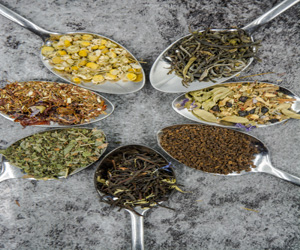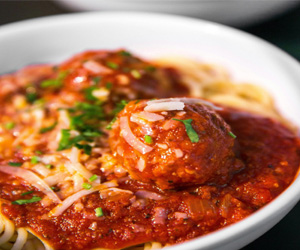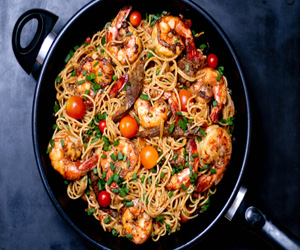


The Unsung Hero Of Stress-Free Cooking
Cooking is a fulfilling and creative endeavor, but it often comes with the less glamorous task of cleanup. However, an easy cleanup is an essential aspect of stress-free cooking. By adopting some simple strategies and organization techniques, you can transform post-cooking chores into a breeze, ensuring that the joy of cooking extends beyond the kitchen.
The Importance Of Easy Cleanup
Why does easy cleanup matter in the world of cooking? Here are some compelling reasons:
1. Time Efficiency: An easy cleanup reduces the time spent washing dishes and tidying up. This is especially crucial in our fast-paced lives when time is a valuable commodity.

2. Stress Reduction: A cluttered, dirty kitchen can contribute to stress and anxiety. Easy cleanup minimizes the chaos and promotes a sense of order and tranquility.
3. Consistency: When cleanup is straightforward, you're more likely to cook at home more often. This promotes healthier eating habits and reduces reliance on takeout or dining out.
4. Culinary Exploration: The prospect of a time-consuming cleanup can deter people from trying new recipes and techniques. Easy cleanup encourages culinary exploration and experimentation.
5. Enhanced Creativity: A clean and organized kitchen can inspire creativity. You're more likely to try new ingredients and cooking methods when your workspace is free from clutter and mess.
Tips For An Easy Cleanup
Here are some practical tips to make your cleanup after cooking a stress-free experience:
1. Prep And Organize: Before you start cooking, gather all your ingredients and utensils. Having everything at arm's reach minimizes the need for excessive movement and reduces potential mess.
2. Cleaning As You Go: Wash and put away utensils, pots, and pans as you cook. This prevents a mountain of dirty dishes from piling up and simplifies the post-meal cleanup.
3. Use Fewer Utensils: Minimize the number of utensils and cookware you use. Select versatile tools that can serve multiple purposes, such as a chef's knife, a large mixing bowl, and a multi-purpose pot.
4. Line Baking Sheets And Pans: When baking or roasting, line pans and sheets with parchment paper or aluminum foil. This reduces the need for extensive scrubbing.
5. Pre-Soak Dishes: For stubborn, stuck-on food, fill dishes with warm, soapy water and let them soak while you eat. This will make cleanup more manageable.
6. Wipe Spills Promptly: Spills and splatters are inevitable during cooking. Wipe them up as soon as they happen to prevent them from hardening and becoming difficult to clean.
7. Use Dish Racks Or A Dishwasher: Invest in a dish rack or utilize your dishwasher if you have one. This keeps dishes organized and dries them efficiently.
8. Organize Cleaning Supplies: Keep cleaning supplies like sponges, scrub brushes, and dish soap within easy reach so you can quickly tackle any messes.
9. Regular Maintenance: Keep your kitchen appliances and tools in good working order. Well-maintained equipment is less likely to lead to unexpected spills or accidents.
10. Enlist Help: Get your family or housemates involved in the cleanup. Sharing the chore can make it a quicker and more social experience.
The Rewards Of Easy Cleanup
Easy cleanup is an unsung hero of stress-free cooking. By incorporating these strategies into your culinary routine, you can ensure that the satisfaction of a well-cooked meal extends beyond the final bite. A clean, organized kitchen not only simplifies the post-cooking chores but also encourages culinary exploration and creativity. Enjoy the process, savor the flavors, and appreciate the seamless transition from the joys of cooking to the ease of cleanup. An organized and clean kitchen is a culinary haven that promotes relaxation and culinary delight.


 The Future Of Nutrition: As our understanding of nutrition evolves, so do the options for nutritious products. Advances in food science and technology continue to enhance the efficacy and quality of these products. The future holds the promise of even more innovative solutions to help us meet our nutritional needs effectively and conveniently.
The Future Of Nutrition: As our understanding of nutrition evolves, so do the options for nutritious products. Advances in food science and technology continue to enhance the efficacy and quality of these products. The future holds the promise of even more innovative solutions to help us meet our nutritional needs effectively and conveniently.
Nutritious products are a valuable addition to our modern lives, providing a convenient and efficient way to ensure our bodies receive the essential nutrients they require. While they should not replace a well-rounded diet of whole, unprocessed foods, they play a crucial role in filling nutritional gaps and supporting our overall health and well-being. With a wide range of options available, finding the right nutritious products to complement your dietary choices and health goals has never been easier.
 Flavor And Culinary Versatility
Flavor And Culinary Versatility
Natural ingredients infuse dishes with the vibrant flavors and aromas that no artificial additives can mimic. Fresh herbs, spices, and produce can elevate a simple meal into a culinary masterpiece. The versatility of these ingredients is unparalleled; they can be used to create a wide array of dishes that cater to various tastes and dietary preferences, from vegan to omnivorous.
 The Art Of Espresso Brewing
The Art Of Espresso Brewing
Brewing the perfect espresso shot is an art that combines precise science and skillful craftsmanship. Several elements must come together harmoniously to create this iconic beverage:
Coffee Beans: The choice of coffee beans is the first crucial step. High-quality beans, often a blend of Arabica and Robusta, are meticulously selected for their flavor profiles. These beans are typically roasted to perfection, ensuring a balance of sweetness, acidity, and bitterness.
Grind Size: The grind size must be tailored to the specific espresso machine. A fine grind is essential for espresso preparation, allowing for optimal extraction.
Water Temperature: The water used for brewing should be at the ideal temperature, usually between 195°F and 205°F (90°C to 96°C), to extract the full spectrum of flavors from the coffee.
Brewing Time: The brewing time is typically around 25-30 seconds, during which hot pressurized water is forced through the coffee grounds. This process ensures that the flavors are extracted efficiently, resulting in a rich and concentrated shot.
A Culinary Journey Of Sensory Delights
 The Appeal Of Flavorful Feasts
The Appeal Of Flavorful Feasts
Why are flavorful feasts so appealing? Here are some compelling reasons:
1. Celebration: Flavorful feasts are often associated with special occasions, holidays, and gatherings. They serve as a way to commemorate and celebrate the moments that matter most.
2. Variety: These feasts offer a diverse selection of dishes that cater to different palates. From savory to sweet, from mild to spicy, there's something for everyone to enjoy.
3. Connection: Preparing and sharing a flavorful feast can strengthen bonds and create a sense of connection. It's a communal experience that fosters togetherness.
4. Sensory Delights: The combination of flavors, aromas, and textures in a flavorful feast creates a sensory adventure. It's a delightful exploration of the culinary world.
5. Tradition: Many flavorful feasts are rooted in tradition, carrying the legacy of generations. They provide an opportunity to pass down family recipes and customs.
Culinary Treasures That Bind Generations

At the heart of beloved recipes lies the concept of familiarity and nostalgia. These are the dishes that have been prepared for generations, and their flavors hold a special place in the hearts of those who have savored them. From grandma's secret apple pie to the famous spaghetti sauce that's a closely guarded family tradition, these recipes bring a sense of comfort and warmth with every bite.
Beloved recipes often represent more than just culinary expertise; they are a reflection of cultural heritage. Passed down from ancestors who immigrated to new lands, these recipes carry with them the essence of a culture, preserving traditions, flavors, and culinary techniques that have been cherished for centuries. Whether it's the rich spices of Indian curry, the simplicity of Italian pasta, or the heartiness of Southern barbecue, beloved recipes offer a window into the world's diverse and vibrant cuisines.
Nourishing, Efficient, And Satisfying
 Financial Savings: Meal preparation can save money. Eating out at restaurants or ordering takeout can be expensive, and the costs add up over time. Meal preparation allows you to buy ingredients in bulk, plan cost-effective meals, and reduce food waste. It's a budget-friendly approach to dining.
Financial Savings: Meal preparation can save money. Eating out at restaurants or ordering takeout can be expensive, and the costs add up over time. Meal preparation allows you to buy ingredients in bulk, plan cost-effective meals, and reduce food waste. It's a budget-friendly approach to dining.
Reduced Food Waste: Meal preparation encourages thoughtful planning, which can help reduce food waste. You can buy ingredients with specific recipes in mind, use leftovers creatively, and ensure that perishable items are consumed before they go bad. This contributes to a more sustainable and eco-friendly way of eating.
Variety And Convenience: Meal preparation doesn't mean eating the same dish every day. With careful planning, you can enjoy a diverse menu throughout the week. You can also pack ready-to-eat meals for work, travel, or outings, ensuring that you always have a satisfying and nutritious option on hand.
Essential Tips For Success
 2. Start With Whole Foods
2. Start With Whole Foods
The foundation of a gluten-free lifestyle is natural, unprocessed foods. Fresh fruits and vegetables, lean proteins, and unprocessed grains like rice and quinoa are naturally gluten-free. These foods should form the basis of your diet, providing you with essential nutrients and fiber.
3. Experiment With Gluten-Free Alternatives
There's a wide variety of gluten-free alternatives available for the bread, pasta, and baked goods you love. Try different gluten-free flours, such as rice, almond, and coconut flour, in your recipes. Experiment with gluten-free pasta made from corn, rice, or quinoa. Over time, you'll discover which products and brands you prefer.
4. Beware Of Cross-Contamination
Cross-contamination is a significant concern for people with celiac disease. Even trace amounts of gluten can trigger symptoms or damage the small intestine.
Nourishing The Body And Soul
 The Appeal Of Hearty Meals
The Appeal Of Hearty Meals
There are several reasons why hearty meals remain so popular and beloved:
1. Comfort In A Dish: Hearty meals offer the kind of comfort that can only come from food made with love and care. They're reminiscent of family gatherings, holiday feasts, and cherished traditions.
2. Sustenance: Beyond the emotional connection, hearty meals provide the sustenance our bodies crave. They often include a balanced combination of protein, fiber, and carbohydrates, making them satisfying and energizing.
3. Versatility: Hearty meals come in various forms, from stews and casseroles to roasts and pastas. This versatility means there's a hearty meal for every palate and occasion.
4. Timelessness: The appeal of hearty meals is timeless. They've been cherished for generations, and their flavors and textures continue to stand the test of time.
5. Celebratory Nature: Hearty meals often take center stage at celebratory gatherings. Think of Thanksgiving dinners, Sunday roasts, or holiday potlucks. These occasions revolve around the joy of sharing a hearty meal with loved ones.